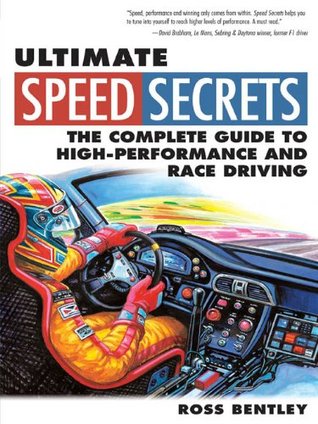More on this book
Kindle Notes & Highlights
by
Ross Bentley
Started reading
August 24, 2017
“slip angle
On a dry track, maximum traction—and therefore maximum acceleration, braking, and cornering (maximum slip angle)—occurs when there is approximately 3 to 10 percent slippage
when tires reach their traction limit and then go beyond, they don’t lose grip completely and immediately. They actually lose grip progressively. And even when they are beyond the limit, completely sliding, they still have some traction.
It’s possible to go slightly beyond the limit without losing complete control and crashing.
“threshold braking.
The goal, as this example demonstrates, is to consistently drive at the lowest possible slip angle that maintains maximum traction.
So traction increases with an increase in vertical load, but the work required of the tire increases faster. The result is an overall decrease in lateral acceleration, and therefore, cornering capabilities.
Unfortunately, the overall effect to the car is a decrease in total vehicle traction.
The more the weight transfers, the less the total vehicle traction will be.
drive in such a way as to keep the weight of the car as equally distributed over all four tires as possible. In other words, balance the car. How? By driving smoothly.
Accelerating too hard or not smoothly enough through a corner transfers excessive weight to the rear, decreasing traction at the front and causing understeer.
To control understeer, decrease the steering input slightly and ease off the throttle gently to transfer weight back to the front.
Turning into a corner with the brakes applied, or lifting off the throttle in a corner (“trailing throttle oversteer”) causes the weight to transfer forward, making the rear end lighter, thus reducing rear wheel traction. The result: oversteer.
accelerate too hard in a rear-wheel-drive car, it will produce “power oversteer.
To control excessive power oversteer, simply ease off the throttle slightly.
gently and smoothly ease on slightly more throttle to transfer weight to the rear,
avoid any rapid deceleration.
all four tires are at the same slip angle.
“being in a four-wheel-drift,
If the car begins to oversteer a little, I squeeze on more throttle to transfer a little weight to the rear;
if it starts to understeer, I ease off slightly, giving the front a little more grip.
prefer a little understeer in fast corners,
oversteer in slow corners
In the rain, because there is less forward weight transfer to the front (because traction limits are lower, heavy braking is not possible without locking up), you will have to adjust the brake bias more to the rear.
drag and lift
“aerodynamic balance.
Sometimes, a car that understeers at relatively low speeds will begin to oversteer at higher speeds.
The low-speed understeer is a result of suspension design. But as the speed increases, bodywork design (including wings if pre...
This highlight has been truncated due to consecutive passage length restrictions.
suspension-induced
aerodynamic-induced
Unfortunately, the increase in downforce (resulting in higher cornering speeds) means more drag, resulting in less straight-line speed.
“drafting” or “
travel faster,
even back off the throttle slightly to ...
This highlight has been truncated due to consecutive passage length restrictions.
When that airflow is blocked by a leading car, the second car’s cornering ability will be reduced.
it feels like the car is at its limit, you may have to drive faster to get more downforce.
A tire achieves a higher traction limit if it is gradually built up to that limit.
Think of the tire’s traction limit as the force it takes to snap a piece of string. If you gradually and gently pull two ends of the string, it requires a lot of force to break it.
It is better to be smooth than to be fast.
TRAIL BRAKING
you brake and turn at the same time.
trail braking.
“unwinding the car
“Do all of the braking in a straight line, go through the corner at maximum cornering force, then accelerate in a straight line,” you are going to waste a lot of the car’s potential and a lot of lap time.
If you are using 100 percent of that traction for cornering, you can’t use even 1 percent for acceleration.
“steering the car with your feet
Most drivers, when they first begin racing, do not slide the car through the turns enough. It’s like the car is on rails. Then, with experience, they begin to slide the car more and more, eventually learning to slide it too much. They are driving slightly beyond the limit. Finally, they learn to fine-tune the amount of sliding, homing in on the ideal slip angle.
there are four separate but related things that a driver must do to drive as fast as possible:


